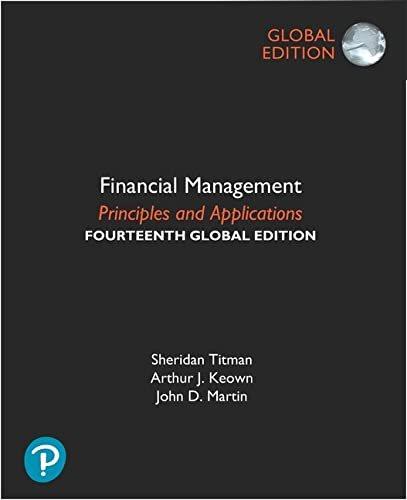Answered step by step
Verified Expert Solution
Question
1 Approved Answer
A small metropolitan community (Anytown, OR) is divided into seven TAZs as shown below. Given some basic information about population, socio-economic status, employment, retail shopping,
A small metropolitan community (Anytown, OR) is divided into seven TAZs as shown below. Given some basic information about population, socio-economic status, employment, retail shopping, travel time, and transit fares our goal is to predict the number of cars using each of the roadways ( flow in veh/day or ADT) in the network in the 2030 forecast year for Saturday home-based, non- work travel


CE 351 Introduction to Transportation Engineering - Oregon Tech. Lab Exercise - Travel Demand Model A small metropolitan community (Anytown, OR) is divided into seven TAZs as shown below. Given some basic information about population, socio-economic status, employment, retail shopping, travel time, and transit fares our goal is to predict the number of cars using each of the roadways (flow in veh/day or ADT) in the network in the 2030 forecast year for Saturday home-based, non-work travel. Background Information 2030 Estimates Zone Retail floor space, 1,000 R 397 65 Population 7,000 2.800 4,900 4,203 8.400 4,900 2,800 35,000 270 120 Employment 790 3.450 725 4,000 1,010 3.210 818 14,003 120 Total 1,098 The population is divided via census data into two market segments with segment 1 being less affluent and segment 2 being more affluent. The LRT fare is $1.65. Cars carry an average of 1.2 persons. Fraction of population in each market segment Zone Market segment 2 Market segment 1 0.37 0.58 0.42 0.66 0.31 0.53 0.34 0.63 0.42 0.58 0.34 0.69 0.47 0.66 single shite CE 351 Introduction to Transportation Engineering - Oregon Tech. Lab Exercise - Travel Demand Model Network Travel Times (minutes) matrix These data need to be converted to a travel time matrix, then (vio RPR factors) to a friction factor Step 1 -Trip Generation Using population, employment and retail space estimates and the following regression equations predict the total Saturday daily zonal productions and attractions. Trip production (3.56 Population) - 554 Trip attraction = (3.29"Employment) + (64.68 retall floor space/1,000ft') + 519 Step 2 - Mode Choice The two available modes are LRT and car. Utility functions for the two market segments were developed as follows: Market segment #1 Market segment #2 Ucar = -0.013t+1.5 Ucor2 = -0.02t +3.5 ULTI = -0.01 -0.50 +0.0 UERTZ-0.015 -0.35c +0.0 Where caout of pocket costs ($) and to travel time/minutes). Use a logit model to produce a) matrix of proportion of car travel for market segment 1 and b) matrix of proportion of car travel for market segment 2 Step 3 - Destination Choice Use a gravity model and matrix balancing to create a "cars/day O-D"matrix (to within 2%) with all t'ab. Assume K-1.0 for all ab pairs. Do not model intrazone travel (.e. T' , ' 30, etc.) Step 4 - Route Choice Since this community is rather small, assume that travel times do not increase significantly with flow. Use a shortest path model to assign trips. CE 351 Introduction to Transportation Engineering - Oregon Tech. Lab Exercise - Travel Demand Model A small metropolitan community (Anytown, OR) is divided into seven TAZs as shown below. Given some basic information about population, socio-economic status, employment, retail shopping, travel time, and transit fares our goal is to predict the number of cars using each of the roadways (flow in veh/day or ADT) in the network in the 2030 forecast year for Saturday home-based, non-work travel. Background Information 2030 Estimates Zone Retail floor space, 1,000 R 397 65 Population 7,000 2.800 4,900 4,203 8.400 4,900 2,800 35,000 270 120 Employment 790 3.450 725 4,000 1,010 3.210 818 14,003 120 Total 1,098 The population is divided via census data into two market segments with segment 1 being less affluent and segment 2 being more affluent. The LRT fare is $1.65. Cars carry an average of 1.2 persons. Fraction of population in each market segment Zone Market segment 2 Market segment 1 0.37 0.58 0.42 0.66 0.31 0.53 0.34 0.63 0.42 0.58 0.34 0.69 0.47 0.66 single shite CE 351 Introduction to Transportation Engineering - Oregon Tech. Lab Exercise - Travel Demand Model Network Travel Times (minutes) matrix These data need to be converted to a travel time matrix, then (vio RPR factors) to a friction factor Step 1 -Trip Generation Using population, employment and retail space estimates and the following regression equations predict the total Saturday daily zonal productions and attractions. Trip production (3.56 Population) - 554 Trip attraction = (3.29"Employment) + (64.68 retall floor space/1,000ft') + 519 Step 2 - Mode Choice The two available modes are LRT and car. Utility functions for the two market segments were developed as follows: Market segment #1 Market segment #2 Ucar = -0.013t+1.5 Ucor2 = -0.02t +3.5 ULTI = -0.01 -0.50 +0.0 UERTZ-0.015 -0.35c +0.0 Where caout of pocket costs ($) and to travel time/minutes). Use a logit model to produce a) matrix of proportion of car travel for market segment 1 and b) matrix of proportion of car travel for market segment 2 Step 3 - Destination Choice Use a gravity model and matrix balancing to create a "cars/day O-D"matrix (to within 2%) with all t'ab. Assume K-1.0 for all ab pairs. Do not model intrazone travel (.e. T' , ' 30, etc.) Step 4 - Route Choice Since this community is rather small, assume that travel times do not increase significantly with flow. Use a shortest path model to assign trips
Step by Step Solution
There are 3 Steps involved in it
Step: 1

Get Instant Access to Expert-Tailored Solutions
See step-by-step solutions with expert insights and AI powered tools for academic success
Step: 2

Step: 3

Ace Your Homework with AI
Get the answers you need in no time with our AI-driven, step-by-step assistance
Get Started


